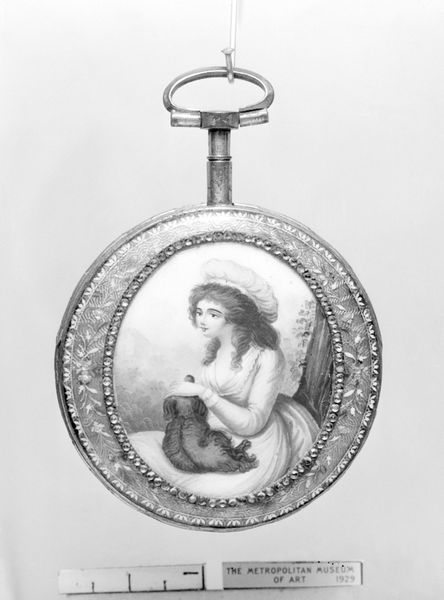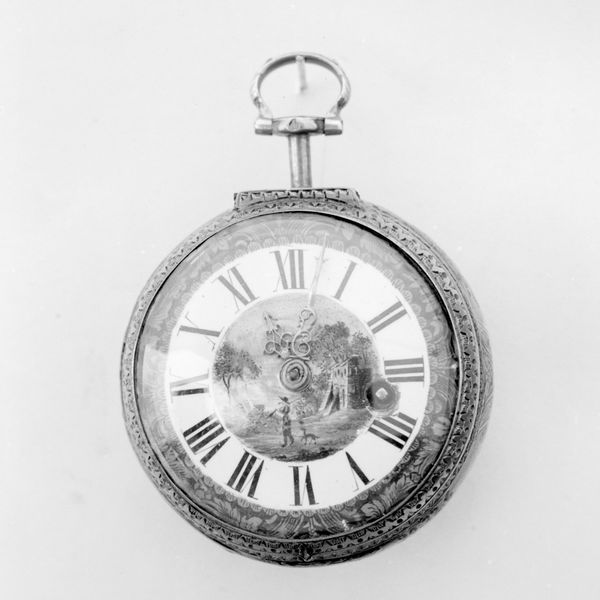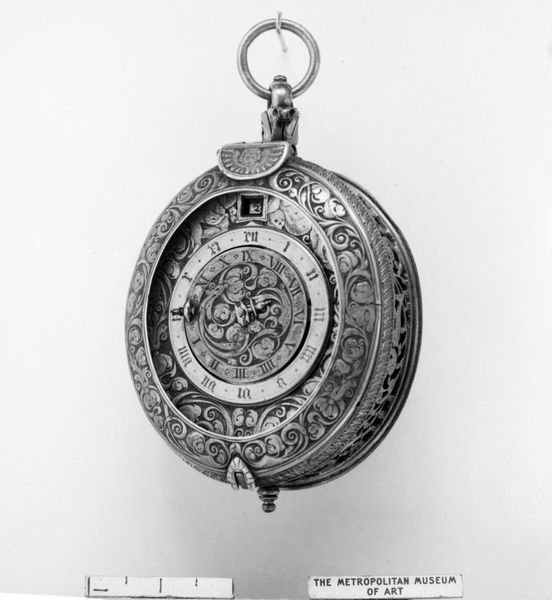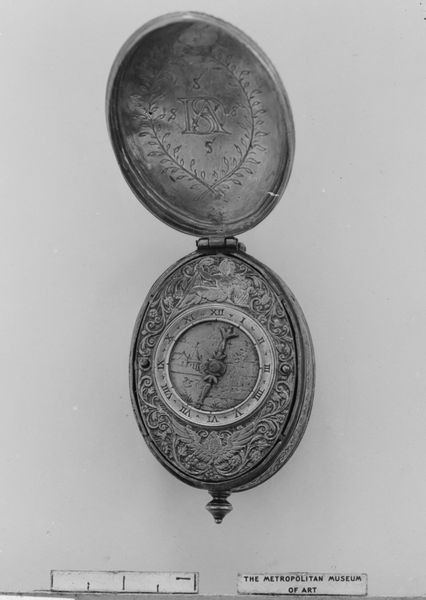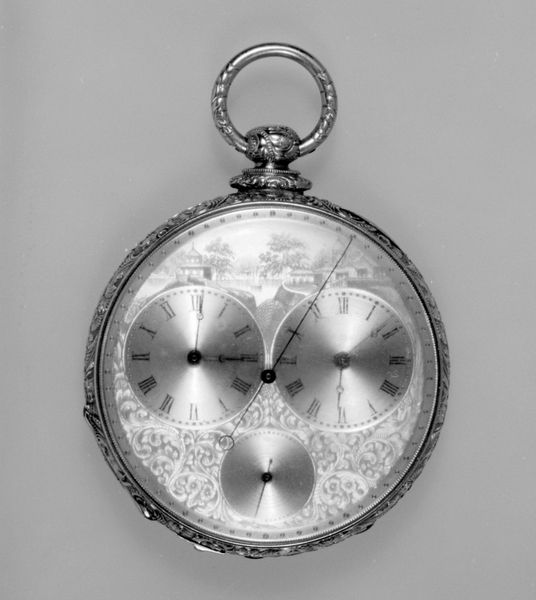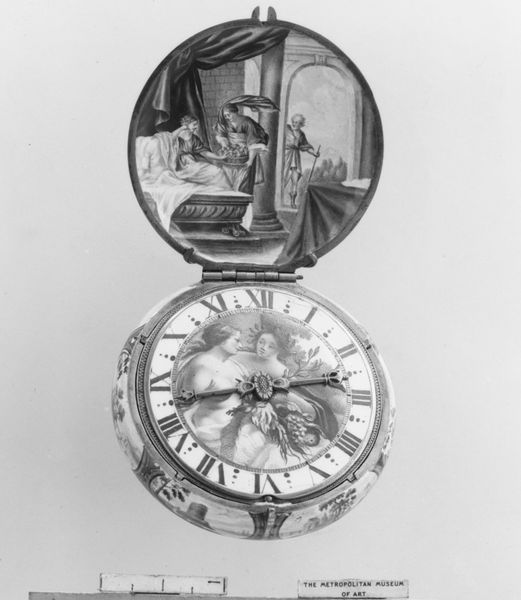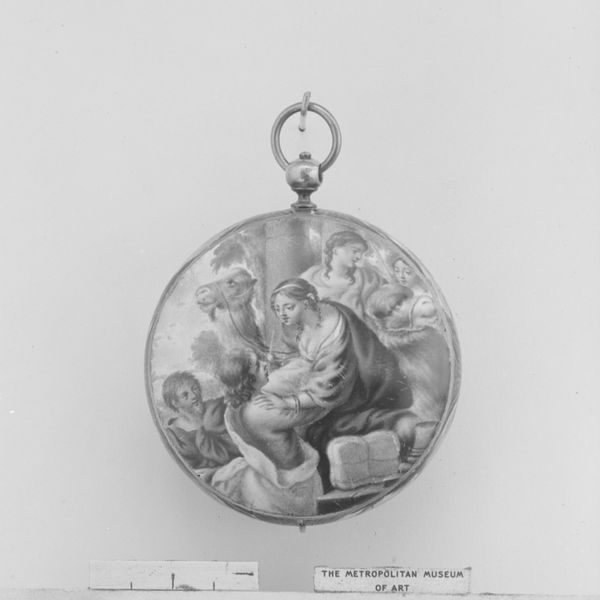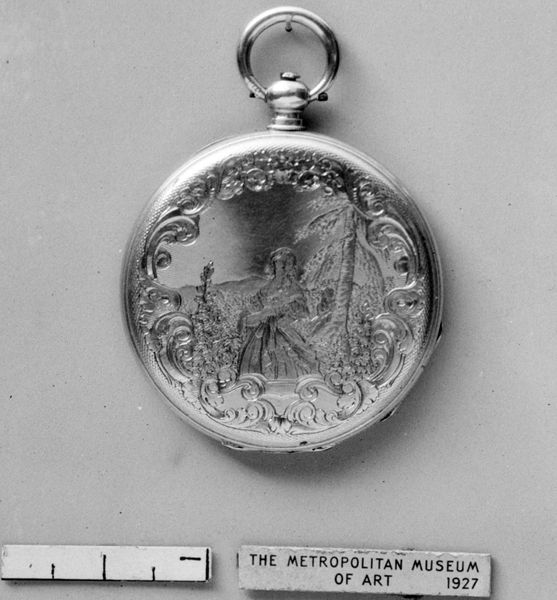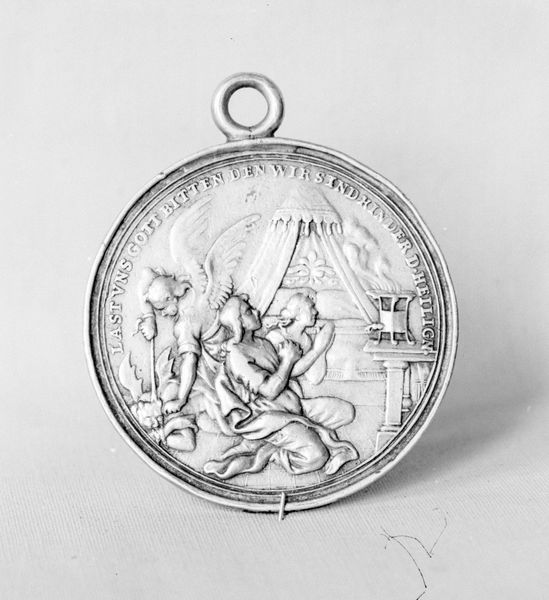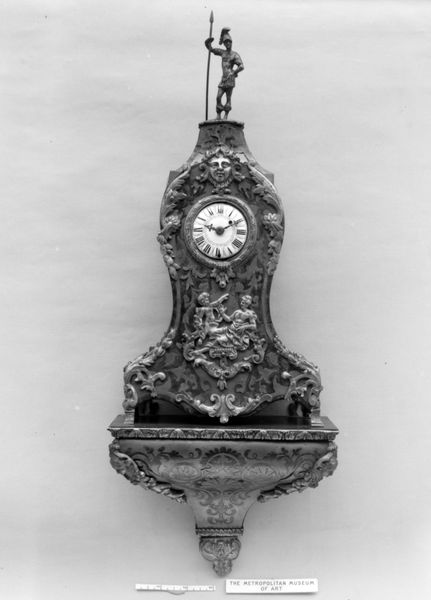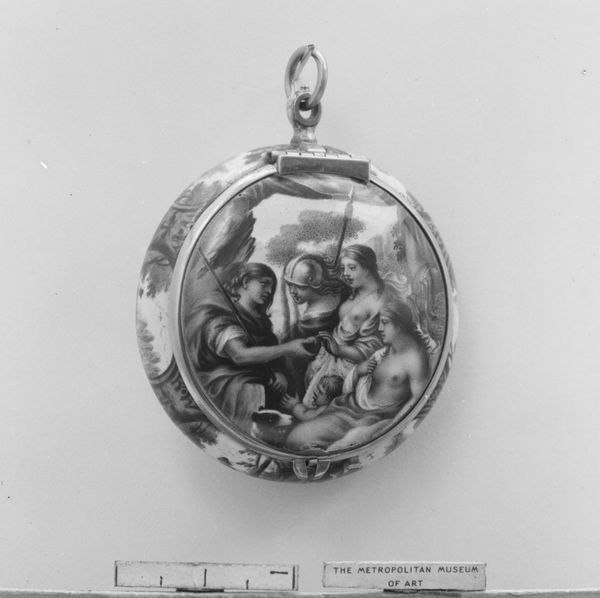
Dimensions: Diam. 1-3/4 in. (4.4 cm)
Copyright: Public Domain
Editor: This "Watch" by J.C. Scherer, dating from around 1785 to 1799, residing here at the Met, presents an interesting example of miniature genre-painting combined with decorative art. It seems delicate and idealized, fitting right into that Rococo aesthetic. What strikes you about the piece? Curator: It's a fascinating example of how art functioned within social rituals. While it seems innocuous at first glance, this watch represents a convergence of technological advancement and aristocratic display. Can you see how the act of checking the time with such an object becomes a performative gesture of wealth and refinement? Editor: I can see that! So the art isn't just *on* the watch, but in how it's used? Curator: Precisely. The imagery itself—the pastoral scene, perhaps referencing classical allegories—further underscores the wearer's education and elevated social status. Who do you imagine would own something like this and where might it have been worn? Editor: Someone wealthy, for sure! Probably at court or at formal gatherings. It's interesting to think about it moving through those spaces, a small canvas in constant motion. Curator: It served as a portable emblem of the owner's identity within a very particular social landscape. The fact that it's functional elevates it beyond mere ornament, it speaks to control over time and schedules, freedoms often denied to other social classes. Editor: It makes me think differently about the role of seemingly decorative arts! This blend of art, function, and status speaks volumes about the late 18th century. Thanks! Curator: Absolutely! Considering objects like this enriches our understanding of the political and social currents shaping artistic production and reception in any given period.
Comments
No comments
Be the first to comment and join the conversation on the ultimate creative platform.
